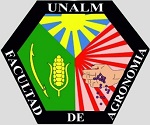Development of advanced mutant lines of barley with higher mineral concentrationsthrough radiation-induced mutagenesis in Peru
DOI:
https://doi.org/10.21704/pja.v1i1.1063Keywords:
barley, mutation, gamma irradiation, qualityAbstract
In Peru it is very important to increase food quality and production in the rural areas where a high poverty and malnutrition problems are found. Mutation induction is used to improve well adapted cultivars, by upgrading one or two characteristics, while retaining all its original attributes. Hordeum vulgare mutant lines were developed from the cultivar UNALM 96, following irradiation at 200 and 300 Gray. Mutant lines were selected in the M8 generation with higher agronomic performance and nutritive quality. They were adapted to the highlands with grain yield within the range of ,100 and 8,731 kg/ha, over the value of the parental material (4,246 kg/ha) and showed improved contents of P (131 mg/g dry weight-DW), Zn (66 mg/g DW), Mn (55 mg/g DW), Fe (57 mg/g DW) and Cu (63 µg/g DW).
Downloads
Downloads
Published
Issue
Section
License
Copyright (c) 2017 L. Gomez, G. Aldaba, M. Ibañez, E. Aguilar

This work is licensed under a Creative Commons Attribution 4.0 International License.











